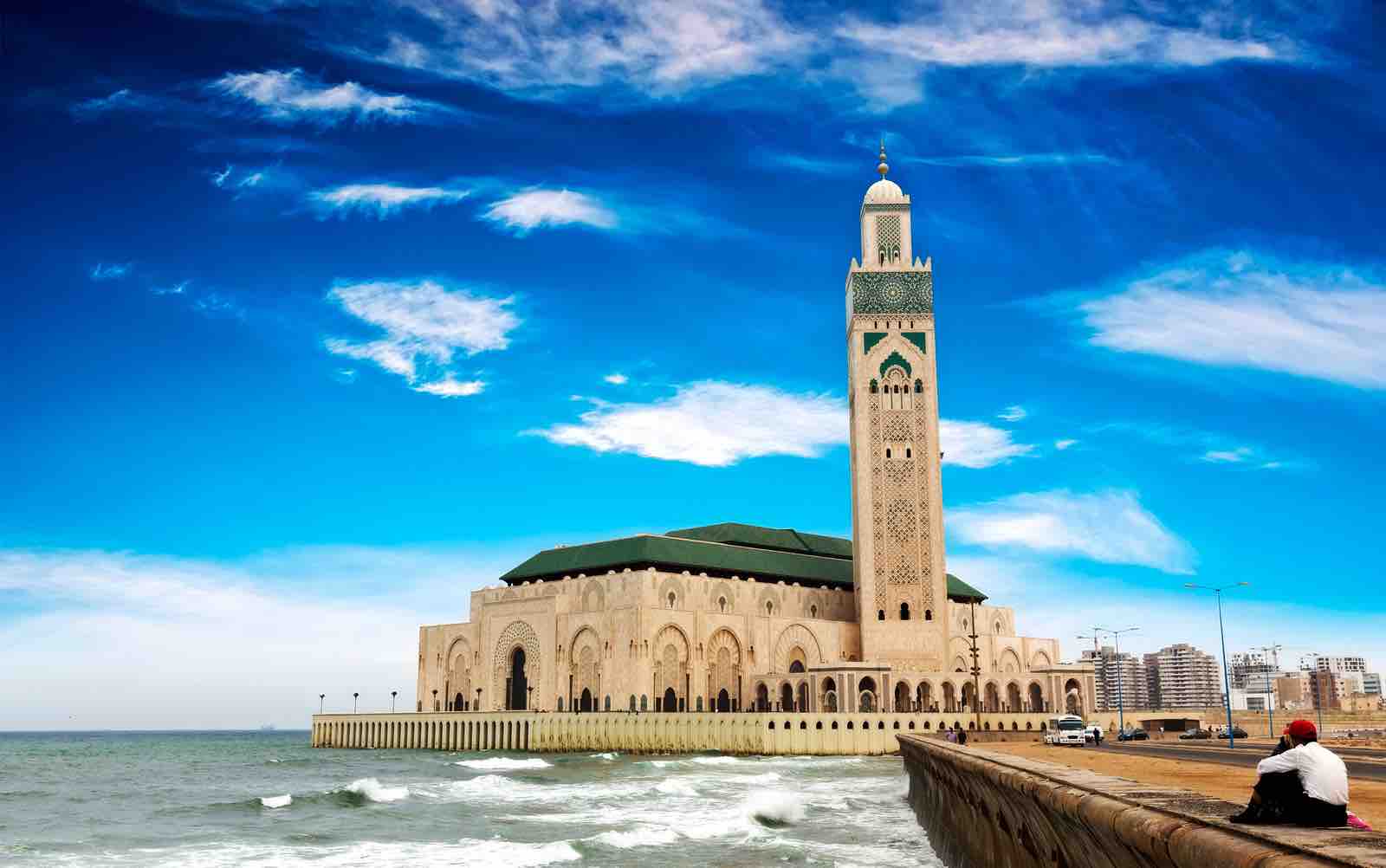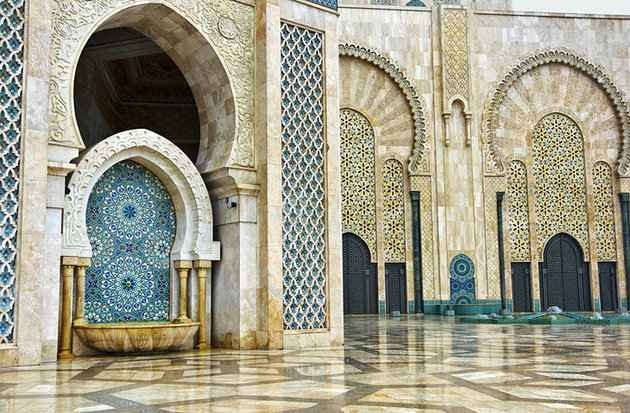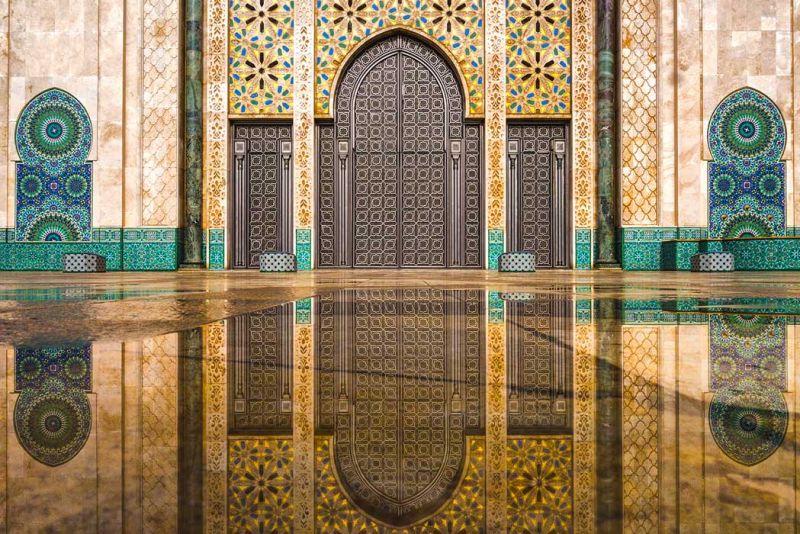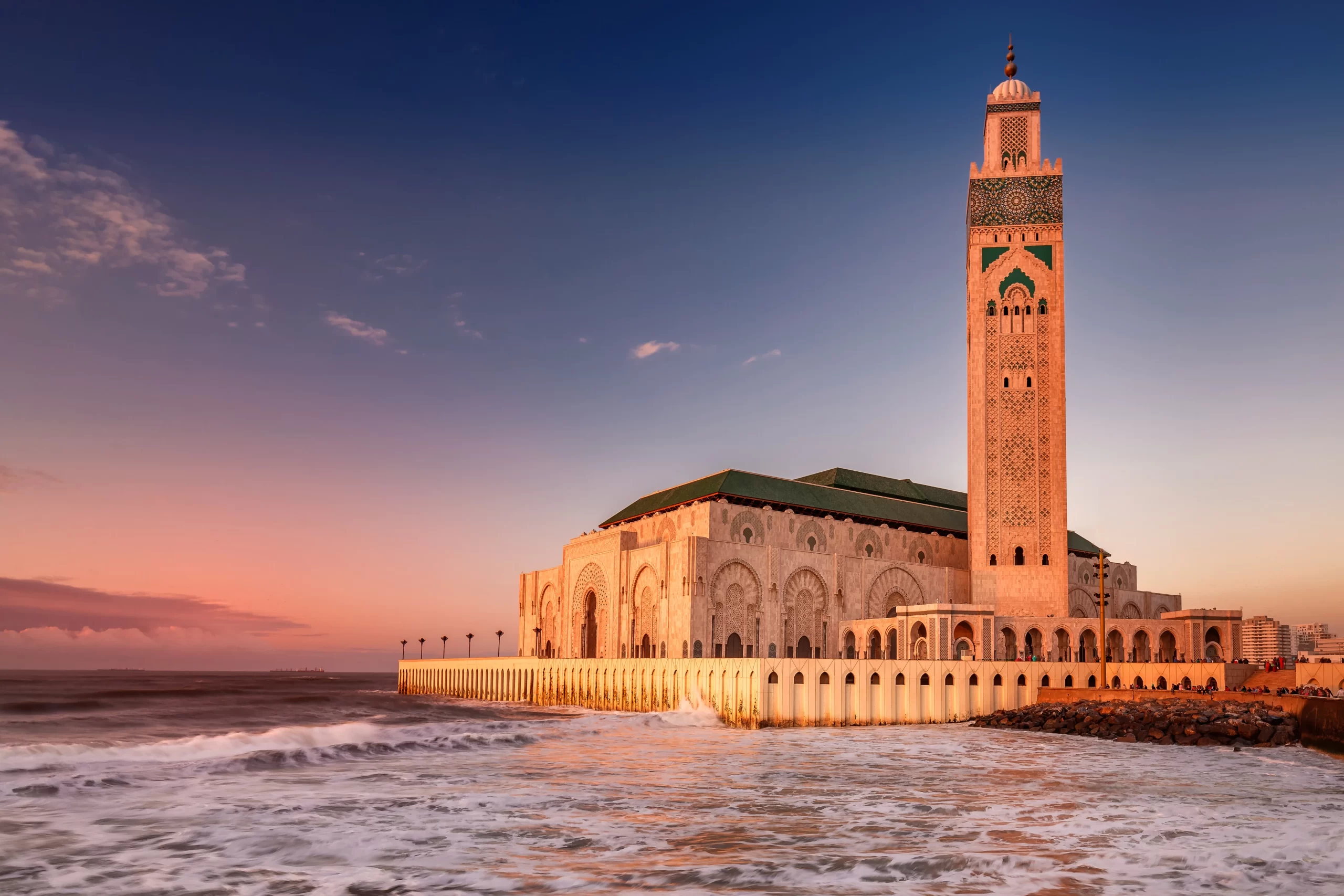List Of Contents
The Hassan II Mosque, located in Casablanca, Morocco, stands as one of the most iconic and architecturally significant religious structures in the world. This mosque, completed in 1993, is not only a place of worship but also a symbol of Morocco’s cultural heritage, architectural ingenuity, and religious devotion. The Hassan II Mosque is the largest mosque in Africa and the third-largest in the world, with its towering minaret reaching a height of 210 meters, making it the tallest minaret globally.
Architectural Grandeur and Design Hassan II Mosque

Designed by the French architect Michel Pinseau, the Hassan II Mosque is an extraordinary example of Islamic architecture infused with modern engineering techniques. The mosque’s design reflects a harmonious blend of traditional Islamic motifs and contemporary elements. The structure is built on a promontory that extends into the Atlantic Ocean, a deliberate choice symbolizing God’s throne above the waters, as mentioned in the Quran.
One of the most striking features of the Hassan II Mosque is its grand minaret, which dominates the skyline of Casablanca. The minaret is adorned with intricate tilework, and at night, a laser beam projects from its summit, pointing towards Mecca, serving as a beacon for the faithful. The mosque’s exterior is decorated with elaborate zellige tilework, carved stucco, and polished marble, showcasing the rich craftsmanship of Moroccan artisans.
The mosque’s interior is equally awe-inspiring. The prayer hall, which can accommodate up to 25,000 worshippers, is adorned with exquisite chandeliers, intricate woodwork, and detailed mosaics. The ceiling of the prayer hall is made of cedar wood, which has been delicately carved and painted by master craftsmen. This ceiling is also retractable, allowing the prayer hall to be opened up to the sky during special occasions. The use of natural materials such as marble, wood, and stone throughout the mosque reflects a deep connection to Morocco’s natural landscape and traditional building techniques.
Cultural and Religious Significance

The Hassan II Mosque is more than just an architectural masterpiece; it is a significant religious and cultural symbol for Morocco and the wider Islamic world. Commissioned by King Hassan II, the mosque was intended to celebrate the late monarch’s 60th birthday and to serve as a reminder of Morocco’s Islamic heritage. The mosque’s location on the Atlantic Ocean also symbolizes the meeting of earth and heaven, emphasizing the spiritual importance of the site.
The mosque is open to both Muslims and non-Muslims, making it a unique cultural attraction in Morocco. Guided tours are available for visitors, allowing them to explore the mosque’s stunning interior and learn about its history and significance. This openness reflects Morocco’s tradition of religious tolerance and its role as a bridge between the Islamic world and the West.
Engineering Marvel
The construction of the Hassan II Mosque was a colossal engineering feat. Built to withstand earthquakes and the harsh Atlantic weather, the mosque’s foundation is reinforced with concrete pillars that anchor it securely to the seabed. The construction involved over 10,000 craftsmen, artisans, and laborers, who worked tirelessly to bring the vision of the mosque to life.
One of the most innovative features of the mosque is its hydraulic system, which allows the prayer hall’s roof to be opened in just a few minutes. This feature not only enhances the mosque’s architectural beauty but also connects worshippers with the natural elements, creating a serene and spiritual atmosphere.
The mosque’s location on the coast presented significant engineering challenges, particularly in terms of protecting the structure from the corrosive effects of saltwater. To address this, advanced materials and construction techniques were employed, ensuring the mosque’s durability for generations to come.
The Mosque’s Role in Modern Morocco

Since its completion, the Hassan II Mosque has become a symbol of national pride and a focal point for Islamic worship in Morocco. It serves as a venue for major religious events, including Eid prayers, and is a central place for the Friday congregational prayers. The mosque’s presence in Casablanca has also contributed to the city’s reputation as a center of Islamic culture and learning.
In addition to its religious functions, the mosque has become a major tourist attraction, drawing visitors from around the world who come to admire its architectural beauty and learn about Islamic culture. The mosque’s integration of modern technology and traditional design elements makes it a powerful symbol of Morocco’s ability to blend tradition with modernity mariatogel.
Conclusion
The Hassan II Mosque is a testament to Morocco’s rich cultural heritage, architectural innovation, and religious devotion. As one of the largest and most magnificent mosques in the world, it stands as a beacon of Islamic art and architecture, drawing visitors and worshippers alike to its stunning halls. The mosque not only reflects the spiritual aspirations of the Moroccan people but also serves as a reminder of the enduring legacy of Islamic civilization in the modern world. Its towering minaret and intricate design continue to inspire awe and reverence, making the Hassan II Mosque a true marvel of the modern age.

